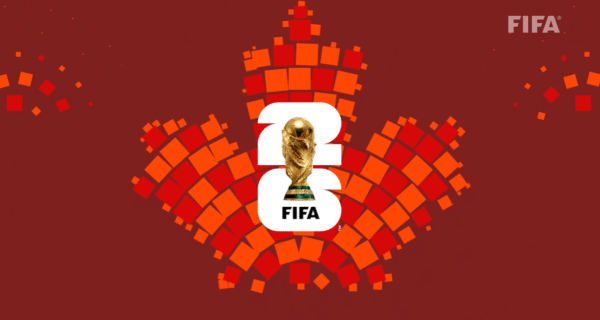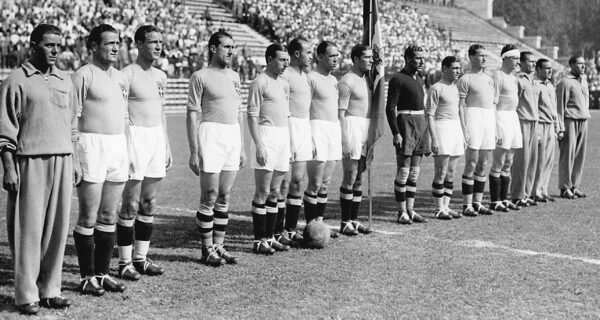The FIFA World Cup stands as the pinnacle of international soccer, bringing together nations from across the globe in a month-long celebration of the beautiful game. At the heart of this tournament lies the group stage – the crucial first phase that sets the stage for the dramatic knockout rounds.
Understanding how the World Cup group stage operates gives fans deeper appreciation for the strategic elements teams must navigate to advance.
This article breaks down the format, points system, and qualification process of the World Cup group stage, including significant changes coming to the 2026 tournament hosted by Canada, Mexico, and the United States.
The Evolution of the World Cup Group Stage Format
The World Cup tournament structure has undergone several transformations throughout its history, with the group stage serving as the foundation of the competition. Let’s examine how this format has evolved and what changes are on the horizon.
Traditional 32-Team Format (1998-2022)
From 1998 through the 2022 tournament in Qatar, the FIFA World Cup featured 32 national teams divided into eight groups (labeled A through H) with four teams each. This structure created a balanced and competitive initial phase with each team guaranteed three matches.
In this format, teams within each group played a single round-robin tournament, meaning every team faced each of the other three teams in their group once. This resulted in six total matches per group (each team playing three games).
To maintain fairness, the final round of matches within each group was scheduled simultaneously, preventing teams from knowing exactly what results they needed in advance.
The structure proved popular because it provided enough games for teams to demonstrate their quality without overwhelming the tournament schedule. Each match carried significant weight, as a single poor performance could jeopardize a team’s chances of advancement.
The New 48-Team Format for 2026
The 2026 World Cup will mark a historic expansion to 48 teams, dramatically changing the tournament’s structure. After initially proposing 16 groups of three teams, FIFA approved a revised format featuring 12 groups of four teams each.
This new format will maintain the excitement of four-team groups that fans have grown accustomed to, but with a significant twist to the qualification process. The top two teams from each group and the eight best third-placed teams will advance to a new round of 32, creating an additional knockout round compared to previous tournaments.
Benefits of this expanded format include:
- More nations participating, especially from underrepresented confederations.
- Additional knockout round matches, increasing drama and revenue.
- Maintaining four-team groups preserves competitive integrity.
- Teams still guaranteed at least three matches.
The expansion represents one of the most significant structural changes in World Cup history and aims to balance growth of the tournament with maintaining competitive quality.
The Points System Explained
The points system forms the backbone of group stage standings and determines which teams advance to the knockout rounds. Understanding these rules helps fans track their team’s progress through the tournament.
How Points Are Awarded
Since 1994, FIFA has employed a straightforward points system for World Cup group matches:
- Win: 3 points
- Draw: 1 point
- Loss: 0 points
Prior to 1994, winners received only 2 points for a victory, but the current system was implemented to encourage more attacking play and reduce the number of defensive-minded draws. This change has successfully incentivized teams to push for wins rather than settling for draws.
The points system creates 729 possible final table outcomes for each group, though only a portion of these scenarios result in clear-cut qualification decisions without requiring tiebreakers.
Strategic Implications
The 3-1-0 points system has profound tactical implications for teams:
A single victory (3 points) outweighs any number of draws (1 point each), pushing teams to take calculated risks for wins, especially in their opening matches. Teams often analyze the group schedule carefully, identifying matches where victories are most achievable and adjusting their approach accordingly.
For example, a team that loses its first match faces significant pressure in its remaining games, typically needing at least one win and possibly a draw to have any chance of advancing. Conversely, teams winning their first match gain flexibility in how they approach subsequent games.
Tiebreaker Rules: Resolving Equal Points
With multiple teams frequently finishing on equal points, FIFA employs a detailed hierarchy of tiebreakers to determine final group standings. These rules become critically important in tightly contested groups.
Primary Tiebreakers
When teams finish level on points, the following criteria are applied in order:
- Goal difference: The differential between goals scored and goals conceded across all group matches.
- Goals scored: The total number of goals scored across all group matches.
These first two tiebreakers emphasize offensive production while accounting for defensive performance, encouraging teams to maximize their scoring even in matches they’re comfortably winning.
Secondary Tiebreakers
If teams remain tied after considering goal difference and goals scored, these additional criteria come into play:
- Head-to-head points: Points obtained in matches played between the tied teams.
- Head-to-head goal difference: Goal difference in matches played between the tied teams.
- Head-to-head goals scored: Goals scored in matches played between the tied teams.
- Drawing of lots: As an absolute last resort, teams are separated by random drawing.
- Fair play points: Based on yellow and red cards received:
- Yellow card: -1 point
- Indirect red card (second yellow): -3 points
- Direct red card: -4 points
- Yellow card followed by direct red: -5 points
These comprehensive tiebreaker rules have successfully resolved most group-stage deadlocks without requiring the random drawing of lots, though the threat of this last-resort method adds additional drama to tightly contested groups.
Qualification to the Knockout Stage
The group stage serves primarily to determine which teams advance to the elimination rounds. The qualification process varies based on the tournament format.
Traditional Qualification Format
In the 32-team format used through 2022, the qualification process was straightforward: the top two teams from each of the eight groups advanced to the round of 16, creating a balanced knockout bracket of 16 teams.
This meant exactly half the tournament field (16 of 32 teams) progressed beyond the group stage. The knockout stage then followed a preset bracket where group winners faced runners-up from different groups in the round of 16.
2026 Qualification Format
The 2026 tournament introduces a more complex qualification system:
- Top two teams from each of the 12 groups automatically qualify (24 teams).
- Eight best third-placed teams also advance (8 additional teams).
- Creates a new round of 32 knockout stage.
This means 32 of the 48 participating teams (66.7%) will advance beyond the group stage. The inclusion of third-placed teams adds complexity to the final group matches, as teams finishing third maintain hope of advancing until all groups conclude.
The addition of the round of 32 increases the total number of knockout matches, extending the drama of elimination games. Teams advancing to the final will now need to win five knockout matches instead of four as in previous tournaments.
Regional Qualification to the World Cup
Before teams can compete in the World Cup group stage, they must navigate their respective continental qualification tournaments. The 2026 FIFA World Cup qualification process allocates spots based on confederation strength.
Confederation Allocation for 2026
The expanded 48-team tournament provides more opportunities for nations across all confederations:
- UEFA (Europe): 16 direct qualification spots
- CAF (Africa): 9 direct qualification spots + 1 playoff spot
- AFC (Asia): 8 direct qualification spots + 1 playoff spot
- CONMEBOL (South America): 6 direct qualification spots + 1 playoff spot
- CONCACAF (North/Central America, Caribbean): 3 direct qualification spots + 2 playoff spots (plus 3 host nations)
- OFC (Oceania): 1 direct qualification spot + 1 playoff spot
The host nations (Canada, Mexico, and United States) qualify automatically, bringing the total to 48 teams.
Regional Qualification Formats
Each confederation determines its own qualification format:
- UEFA employs a group stage where winners qualify directly, with playoffs determining remaining spots.
- CONMEBOL uses a single round-robin league where all ten nations play each other home and away.
- AFC, CAF, and CONCACAF typically use multiple rounds of group stages and playoffs.
- OFC traditionally has a multi-stage tournament among Pacific island nations.
The lengthy qualification process often spans two to three years, with some teams playing up to 20 matches to secure their World Cup berth.
Group Stage Strategic Considerations
The group stage format creates fascinating strategic dynamics that influence team approaches throughout the tournament’s opening phase.
Match Scheduling Impact
The order of matches can significantly affect team strategies. In each group, teams typically adjust their approach based on:
- Opening match importance (avoiding defeat is often prioritized).
- Middle match adjustments (based on first-match results).
- Final match calculations (knowing exactly what result is needed).
Teams that secure qualification early may rest key players in their final group match, particularly if those players risk suspension for yellow card accumulation.
Balancing Risk and Reward
Group stage play requires careful risk management across three matches. Teams must balance:
- When to play conservatively vs. aggressively.
- Player rotation to maintain freshness.
- Managing yellow cards to avoid suspensions.
- Goal difference considerations in case of ties.
Historically, teams averaging at least 4 points (typically one win and one draw) have strong chances of advancing, creating clear target thresholds for most teams.
Frequently Asked Questions
1. How many teams qualify from each group in the 2026 World Cup?
In the 2026 World Cup, the top two teams from each of the 12 groups will automatically qualify for the knockout stage. Additionally, the eight best third-placed teams across all groups will also advance, creating a new round of 32 knockout phase.
2. How many points do teams typically need to advance from their group?
Teams generally need at least 4 points (one win and one draw) to have a good chance of advancing from their group. However, some groups have seen teams advance with 3 points, especially when goal difference becomes a favorable factor.
3. What happens if two teams finish with identical records in the group stage?
If teams finish with identical points, FIFA applies a series of tiebreakers: first goal difference, then goals scored. If still tied, head-to-head results between the teams are considered, followed by fair play points based on disciplinary records. As a last resort, drawing of lots is used.
4. How are teams seeded into World Cup groups?
Teams are divided into four pots based primarily on the FIFA World Rankings. Pot 1 contains the highest-ranked teams including the hosts, and each group receives one team from each pot. Geographic restrictions prevent more than two European teams or more than one team from any other confederation in the same group.
5. Why did FIFA expand the World Cup to 48 teams for 2026?
FIFA expanded the World Cup to increase global participation, particularly from underrepresented regions like Africa and Asia. The expansion also increases the tournament’s commercial potential with more matches and broader global interest from additional participating nations.
6. How does the points system encourage attacking play?
The 3-1-0 points system (three points for a win, one for a draw) incentivizes teams to pursue victories rather than settling for draws. This system replaced the previous 2-1-0 format in 1994 specifically to encourage more attacking, entertaining soccer during the group stage.
7. What is a “Group of Death” in the World Cup?
A “Group of Death” refers to a particularly difficult group containing multiple strong teams, where at least one high-quality team will inevitably be eliminated. These groups create especially intense competition and usually generate the most interest during the group stage.
8. How are the final group matches scheduled?
The final two matches in each group are played simultaneously to preserve competitive integrity. This prevents teams from knowing exactly what results they need and reduces the possibility of match manipulation, ensuring all teams compete fairly until the end of the group stage.
9. How do the best third-placed teams qualify in the 2026 format?
In the 2026 tournament, the eight best third-placed teams across all 12 groups will advance based on total points earned. If teams are tied on points, the same tiebreakers used within groups apply: goal difference, goals scored, and so on.
10. Has any team ever advanced from a group with three losses?
No team has ever advanced from a World Cup group stage after losing all their matches. The minimum achievement for advancement historically has been one win (3 points) or three draws (3 points), usually with favorable goal difference compared to other teams.













